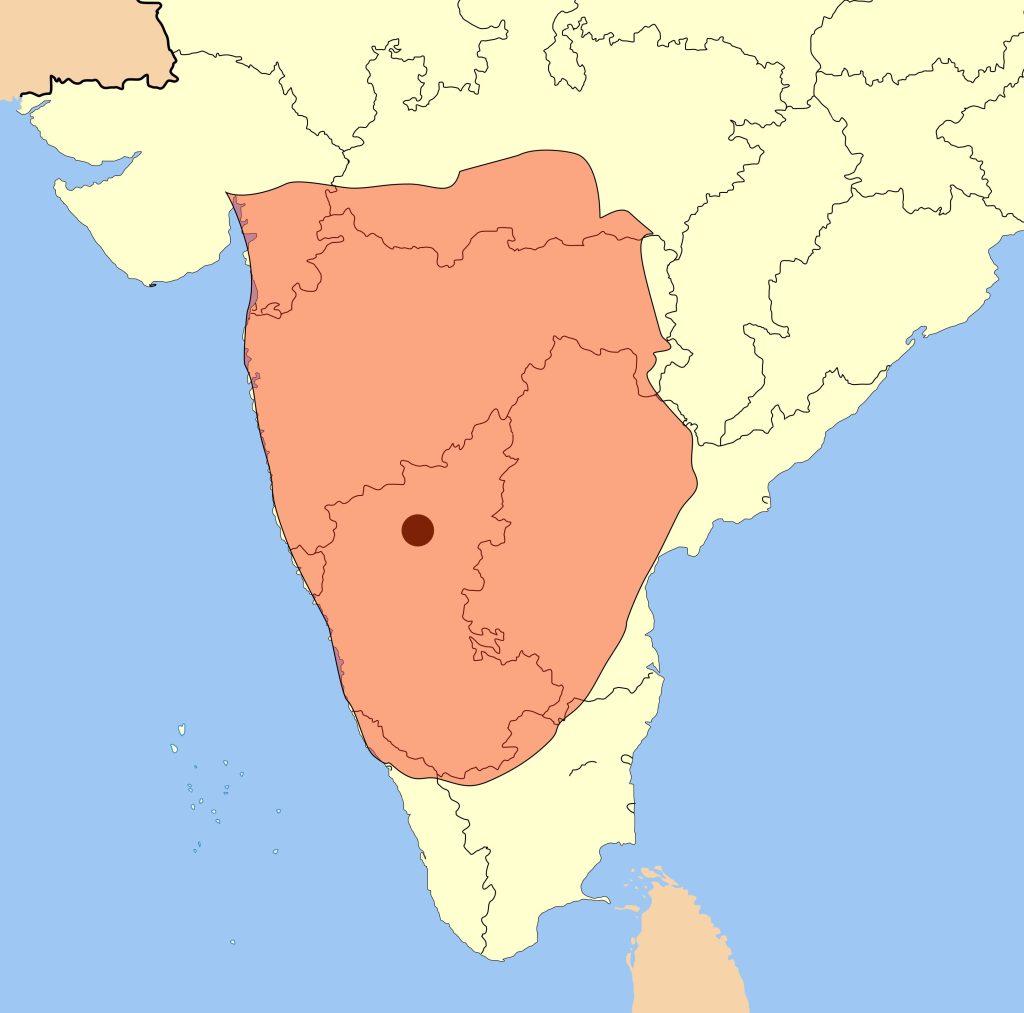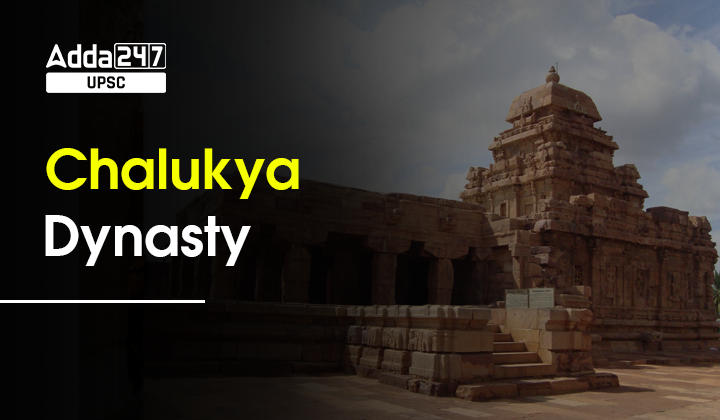Table of Contents
Chalukya Dynasty- The Chalukya Dynasty was a powerful and influential empire that existed in southern India from the 6th century to the 12th century. This dynasty was one of the most significant and prosperous empires in Indian history, with a rich cultural heritage and a legacy that continues to this day. In this article, we will explore the founder of the Chalukya dynasty, its capital, its map, the rulers who ruled the empire, and other interesting facts about the Chalukya Dynasty.
Introduction to the Chalukya Dynasty
The Chalukya dynasty was established in the 6th century by Pulakeshin I. It was a prominent dynasty that ruled over most parts of southern India for over 600 years. The empire’s territory extended from the Narmada River in the north to the Kaveri River in the south, covering most parts of present-day Karnataka, Andhra Pradesh, and Maharashtra.
Extention of Chalukya Dynasty
- The Chalukya Dynasty was founded by Pulakeshin I in the 6th century CE in the region of modern-day Karnataka.
- The dynasty reached its peak under the reign of Pulakeshin II, who expanded the empire’s borders through conquest and diplomacy. He defeated the powerful North Indian ruler Harsha and established Chalukya dominance over much of present-day central India.
- The Chalukya Dynasty split into two branches in the 8th century CE: the Western Chalukyas and the Eastern Chalukyas. The Western Chalukyas ruled over the Kannada-speaking region of the Western Deccan, while the Eastern Chalukyas ruled over the Telugu-speaking region of Andhra Pradesh.
- The Western Chalukya Dynasty continued to flourish under the rule of famous monarchs such as Vikramaditya VI, who extended the empire’s borders and patronized art and culture.
- The Eastern Chalukya Dynasty reached its peak under the rule of Rajaraja Narendra, who successfully resisted the Chola Dynasty’s attempts to annex his kingdom and expanded his empire into modern-day Tamil Nadu.
- The Chalukya Dynasty declined in the 12th century CE due to internal conflicts, external invasions, and economic instability. The last ruler of the dynasty was defeated by the Hoysala Empire in the early 12th century CE.
The Founder of the Chalukya Dynasty
The founder of the Chalukya dynasty was Pulakeshin I. He was the first ruler of the Chalukya dynasty and is considered the founder of this great empire. Pulakeshin I was a powerful king who ruled from his capital city of Badami, which was located in present-day Karnataka.
Rulers of the Chalukya Dynasty
Prominent rulers of the Chalukya Dynasty and their major accomplishments:
| Ruler | Reign | Accomplishments |
|---|---|---|
| Pulakeshin I | 543-566 CE | Founded the Chalukya Dynasty |
| Pulakeshin II | 610-642 CE | Defeated Harsha of Kannauj, expanded the empire’s borders |
| Vikramaditya I | 655-680 CE | Commissioned the construction of the famous Virupaksha Temple |
| Vikramaditya II | 733-746 CE | Extended the empire’s borders, patronized art and culture |
| Kirtivarman II | 745-755 CE | Defeated the Rashtrakutas in a series of battles |
| Jayasimha II | 1015-1042 CE | Defeated the Western Chalukyas and expanded his empire’s borders |
| Someshvara I | 1042-1068 CE | Patronized literature and art, commissioned the Kedareswara Temple |
| Vikramaditya VI | 1076-1126 CE | Extended the empire’s borders, patronized art and culture |
| Someshvara III | 1127-1139 CE | Commissioned the construction of the famous Hoysaleswara Temple |
| Tailapa II | 1173-1183 CE | Successfully resisted the Chola Dynasty’s attempts to annex his kingdom |
Pulakeshin I
Pulakeshin I was the founder of the Chalukya dynasty. He ruled from his capital city of Badami and was a powerful king who established the empire’s foundations.
Vikramaditya I
Vikramaditya I was a notable ruler of the Chalukya dynasty. He was a patron of the arts and was responsible for building many magnificent temples across the empire.
Kirtivarman I
Kirtivarman I was another notable ruler of the Chalukya dynasty. He was a powerful king who expanded the empire’s territory and strengthened its economy.
Pulakeshin II
Pulakeshin II was one of the most famous rulers of the Chalukya dynasty. He was a brilliant military strategist who defeated the powerful North Indian emperor Harsha.
Vikramaditya II
Vikramaditya II was another significant ruler of the Chalukya dynasty. He was a patron of the arts and was responsible for building many magnificent temples across the empire.
| UPSC Exam-Related Study Notes | |
| Mauryan Empire |
Chola Dynasty |
| Anglo-Maratha War | 16 Mahajanapadas |
| Pala Empire |
Gupta Empire |
Administration and Society (Chalukya Dynasty)
Administration
- The Chalukya Dynasty was a feudal monarchy, with the king at the top of the social hierarchy.
- The empire was divided into smaller administrative units called rashtras or nadus, each of which was governed by a local chief or nadu-mandaleshwara.
- The empire was also divided into three major provinces, each of which was governed by a viceroy or samanta-mandaleshwara.
- The Chalukya kings appointed officials to various administrative positions such as revenue collection, justice administration, and military command.
- The Chalukyas were known for their efficient and decentralized administrative system, which allowed them to effectively govern their vast empire.
Society
- The Chalukya Dynasty was a multi-ethnic society, with people from different regions and religions coexisting peacefully.
- The society was divided into four major varnas or social classes: Brahmins, Kshatriyas, Vaishyas, and Shudras.
- Agriculture was the main occupation of the people, and the Chalukyas encouraged the development of irrigation systems and the cultivation of new crops.
- The Chalukyas were patrons of art, architecture, literature, and music, and many famous monuments and works of art were produced during their reign.
- Women had a respected place in Chalukya society and were involved in various activities such as education, trade, and administration.
- The Chalukyas were known for their religious tolerance, and people of different faiths such as Hinduism, Buddhism, and Jainism coexisted peacefully in their empire.
Capital of the Chalukya Dynasty
The capital of the Chalukya dynasty was Badami, which was located in present-day Karnataka. Badami was a strategically important city, situated on the banks of the Malaprabha River. The city was known for its magnificent rock-cut temples, which were carved out of the red sandstone cliffs surrounding the city.
Map of the Chalukya Dynasty
The Chalukya dynasty’s empire covered most parts of present-day Karnataka, Andhra Pradesh, and Maharashtra. The empire’s capital, Badami, was located in present-day Karnataka. The Chalukya dynasty’s territory extended from the Narmada River in the north to the Kaveri River in the south.

Decline of Chalukya Dynasty
Internal conflicts: The Chalukya Dynasty witnessed several internal conflicts and power struggles, especially towards the end of their reign. This weakened the central authority and created instability in the empire.
External invasions: The Chalukya Dynasty faced several external invasions from the Rashtrakutas, the Cholas, and the Kalachuris. These invasions weakened the empire’s military and economic power.
Economic instability: The Chalukya Dynasty faced economic instability due to factors such as mismanagement of resources, decline in agricultural productivity, and inflation. This led to a decline in the empire’s economic power and prosperity.
Loss of key territories: The Chalukya Dynasty lost several key territories to rival kingdoms such as the Rashtrakutas and the Cholas. This weakened the empire’s political and military power.
Decline in patronage of art and culture: The Chalukya Dynasty was known for its patronage of art, literature, and architecture. However, towards the end of their reign, this patronage declined, and the dynasty lost its cultural and intellectual vibrancy.



 TSPSC Group 1 Question Paper 2024, Downl...
TSPSC Group 1 Question Paper 2024, Downl...
 TSPSC Group 1 Answer key 2024 Out, Downl...
TSPSC Group 1 Answer key 2024 Out, Downl...
 UPSC Prelims 2024 Question Paper, Downlo...
UPSC Prelims 2024 Question Paper, Downlo...
